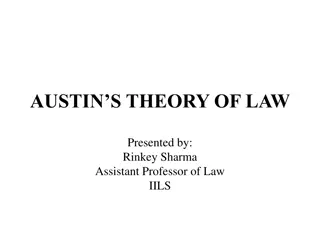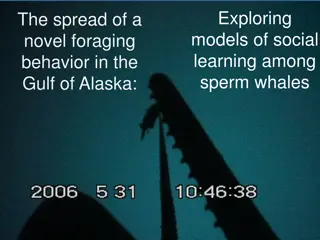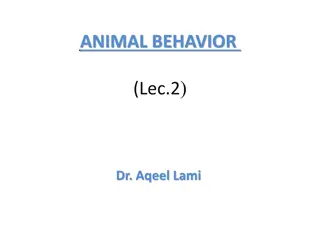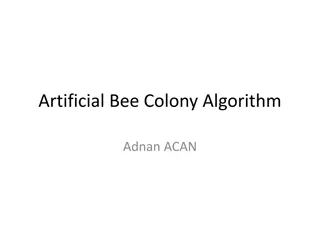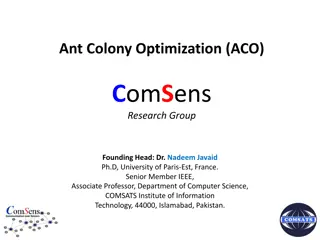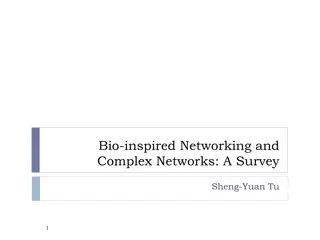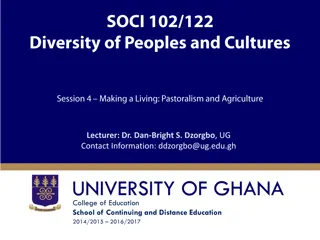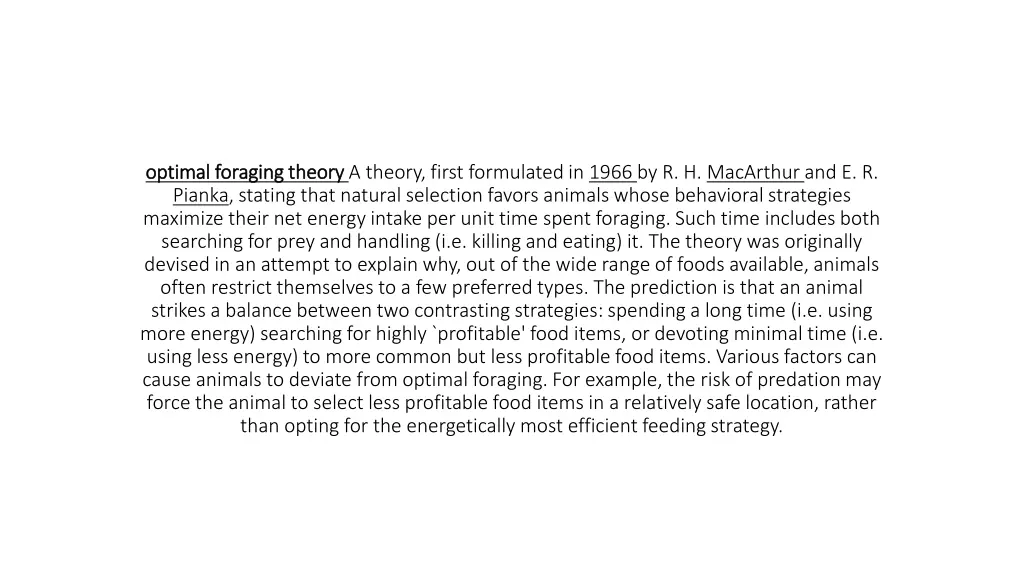
Foraging Theory and Optimal Foraging Strategies
Optimal foraging theory, proposed in 1966 by R. H. MacArthur and E. R. Pianka, explores how animals maximize energy intake while foraging. Factors affecting optimal foraging include search time, handling time, the Marginal Value Theorem, and Giving Up Time (GUT).
Download Presentation

Please find below an Image/Link to download the presentation.
The content on the website is provided AS IS for your information and personal use only. It may not be sold, licensed, or shared on other websites without obtaining consent from the author. If you encounter any issues during the download, it is possible that the publisher has removed the file from their server.
You are allowed to download the files provided on this website for personal or commercial use, subject to the condition that they are used lawfully. All files are the property of their respective owners.
The content on the website is provided AS IS for your information and personal use only. It may not be sold, licensed, or shared on other websites without obtaining consent from the author.
E N D
Presentation Transcript
optimal foraging theory optimal foraging theoryA theory, first formulated in 1966 by R. H. MacArthur and E. R. Pianka, stating that natural selection favors animals whose behavioral strategies maximize their net energy intake per unit time spent foraging. Such time includes both searching for prey and handling (i.e. killing and eating) it. The theory was originally devised in an attempt to explain why, out of the wide range of foods available, animals often restrict themselves to a few preferred types. The prediction is that an animal strikes a balance between two contrasting strategies: spending a long time (i.e. using more energy) searching for highly `profitable' food items, or devoting minimal time (i.e. using less energy) to more common but less profitable food items. Various factors can cause animals to deviate from optimal foraging. For example, the risk of predation may force the animal to select less profitable food items in a relatively safe location, rather than opting for the energetically most efficient feeding strategy.
Optimal Foraging theory (MacArthur and Pianka 1966) S = search time P = pursuit or handling time Optimum
Marginal Value Theorem In behavioral ecology, the marginal value theorem (MVT) considers an optimally foraging animal exploiting resources distributed in patches and that must decide when to leave a patch to start searching for a fresh one. Patches are areas of habitat (such as where it forages) Foraging = feeding






